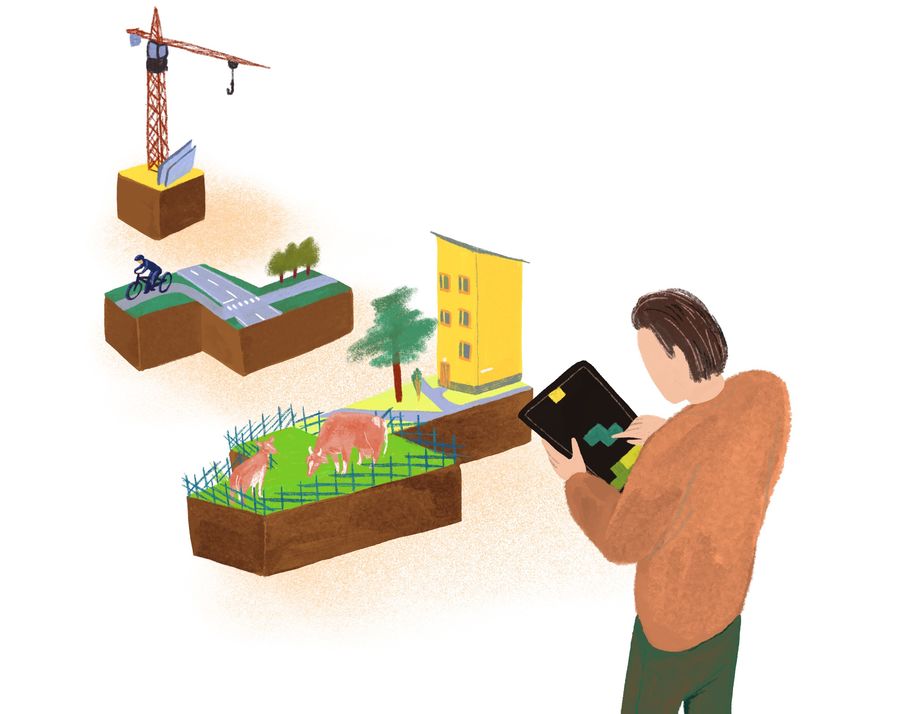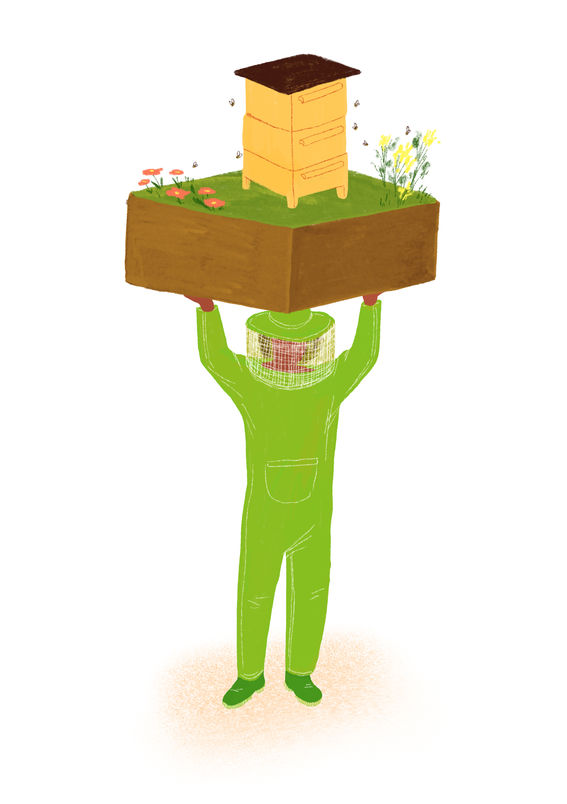Urban planning in an intersection of a thousand wishes

‘There won’t be any nature left in the neighbourhood thanks to ugly, identical buildings.’ That’s how one respondent replied to a city survey collecting resident views.
Espoo, a city in Finland’s capital region known for its architecture, tech companies as well as its proximity to nature, is the subject of rather emotional urban planning. Its development has been strongly guided by increases in private car use, and the city has grown significantly in the last few years. Despite – or perhaps due to – these shifts, many would like to protect the greenery and forests nearby.
Researchers and urban planners came together to ask residents about their thoughts on the region. Approximately 6,600 residents responded to the My Espoo on the Map survey, marking almost 70,000 personally meaningful spots and development ideas on the map, in the project run by Aalto University and the City of Espoo.
The exercise brought forward practical suggestions: public saunas for beaches, sports activities, restaurants and campfire sites. Someone even came up with the idea of covering the Länsiväylä motorway with a green deck, to mimic a park. In the survey, people were asked to mark where they would place new homes, and what they should look like.
Although not all suggestions can be carried out, the results can already be applied to practice. For example, planning for one new neighbourhood, Lasihytti, which currently consists of mainly industrial, field and riverside areas, has already started. The aim is to bring a distinctly urban character to the area, along with apartments for approximately 4,000 residents.
The data stemming from My Espoo on the Map project has provided residents with meaningful information. For example, riverside recreational activities and having a unified road for bikes and pedestrians are considered important in the Lasihytti area. The development of riverside areas in Espoo has seen particular attention in the urban plan.

In-depth knowledge about area use
Environmental and urban planning typically involves complex and lengthy processes. Marketta Kyttä, Professor of Land Use Planning at Aalto University, which educates experts on these subjects, says that collaboration between researchers and urban planners has been especially active in Espoo.
The research has used the SoftGIS method, which gathers data produced by people on the map. In the City of Espoo, this data has been integrated into the geographical information system, which all planners utilise in their everyday work.
Because 70,000 spots is too much for any party to handle – even a city – the prioritisation process has been improved. The underlying theory is that the quality of life improves best when the focus is on places that residents use the most yet, for one reason or another, view negatively.
‘We identified these hot spots and checked how aligned they were with places that Espoo has already considered directing resources,’ Kyttä says.
Their findings? A lot of overlap, which gives hope for finding resources.

Urbanisation continues
The pandemic reshaped our notions of living, with remote work making many reconsider where they live, and even acquire a second home. The concept of multi-location living suddenly became more of reality.
Johanna Palomäki, Planning Manager at the City of Espoo at the time of the survey and now working for the City of Lahti, says that urbanisation continues, distinguishing Finland from the rest of Europe. Yet while more is being built, green areas are reduced, and new greenery does not emerge; urban growth should, rather, focus on already developed areas.
‘I believe that the quality of the built environment can improve and that we will learn to make cities for people while also protecting natural areas.’
According to Palomäki, data collected by Aalto University provides much to analyse and utilise for years to come. Work on the city’s new master plan for the city is getting off the ground, and the data supports these efforts. Discussion nights have further made it possible for residents to consider the future of the city.
‘We also keep getting direct feedback, and it often shows anguish. Espoo is experiencing growing pains, and we must bravely discuss what type of growth people want to see,’ Palomäki notes.
Research data confirms the notion that green environments and recreational areas are important. Palomäki does not see Espoo residents as ‘nimbyists’ or opponents of growth. Many are simply unsatisfied with the quality of the environment that has resulted..
Palomäki has challenged construction companies and urban planners to consider ways of inserting more green into the cityscape instead of always sacrificing green infrastructure first when it comes to finding savings. One alternative for high apartment buildings and sparse neighbourhoods of single-family houses is effective mid-scale construction that includes small urban homes.
Living environment impacts health
Kyttä hopes that Finland will find more diverse ways of urbanisation. She believes that the country is replicating a single way of building; if it was once a suburb, it is now continuous urban infill.
Good urban planning considers the effects of the environment on well-being. As an environmental psychologist, Kyttä has researched the subject in many projects. The alleviating effects the green has on the environment and on improving mood are already widely recognised. Another important factor is how the environment encourages people to have an active lifestyle. In this sense, some degree of density is good.
‘Pretty densely built environments can mobilise even the most dedicated couch potatoes,’ Kyttä says.
One research project Kyttä has been involved in followed people who moved from one neighbourhood to another. Even when attitudes towards everyday sports were not positive, people’s movements increased as they moved to denser areas near services and did not need a car as much as they used to.
‘The environment makes people change their everyday lives unexpectedly, and even attitudes will follow.’
Next, the teams of professors Kyttä and Henrikki Tikkanen will study the influence of the urban environment on social well-being, led by post-doctoral researcher Tiina Rinne. The living environment does not influence strong social ties, relationships with family or friends, as such. Instead, it affects lighter social ties, such as neighbourhood communality.
Marketta Kyttä‘Pretty densely built environments can mobilise even the most dedicated couch potatoes.’

Social learning plays a major part in planning
Susa Eräranta, Professor of Practice at Aalto University and Project Director at the City of Helsinki, studies how urban planning practices, knowledge flows and collaboration develop over time.
In her doctoral thesis, she examined collaboration between experts: how information is or is not passed on, and what promotes or hinders collaboration. The research focused on a four-year strategic spatial planning process in the metropolitan area with anonymised data.
‘For example, during planning work, experts on the environment and mobility might not communicate with each other much but rather through an intermediary. Specialised questions are processed in siloes. Coordinators have a lot of significance and relational power.’
This means that the parties involved may never get the bigger picture. Your idea of the goals and solutions during the vision stage may look very different than at a later stage.
Climate actions change the cityscape
Eräranta works with reducing emissions at the City of Helsinki. In her view, climate actions will alter not only energy consumption but eventually the cityscape, as well.
‘Right now, city plans may have very strict parameters for materials and colours in façades. If more recycled elements and materials are needed in the future, the elements available will be used. This increases the diversity of the cityscape.’
Now the goal is to use mined rock from buildings in nearby sites, as well as better recycle building elements and materials in the future.
Eräranta says that future cities will have more biodiversity. Parks will no longer just be grass carpet; a variety of biotopes and environments suitable for pollinators, as one example, are needed.
Previously, a site-specific Green Factor has been used to determine biodiversity and drainage water solutions.
‘Now methods for wider areas are being developed – methods that take into account how different green spaces in neighbourhoods are connected.’
Tactical urbanism and urban activism also alter the landscape. Areas with little use can be appointed or taken into use as arenas for free civic activities, increasing the diversity and depth of urban environments, like Helsinki’s old engine sheds in the neighbourhood of Pasila, which have hosted many kinds of leisure activities, events and collective farming.
Empty promises should never be made
Next door in Helsinki, residents also take part in urban planning. Eräranta says that in 2016, a public participation geographic information survey (PPGIS) was carried out, as part of the preparatory work for the city plan, to find out which areas are central to everyday life and which places must be preserved.
The city allocates a specific sum, which can be used to make wishes a reality. Suggestions may include the planting of trees, construction of a dock or the development of sports parks or playgrounds.
As much as residents get their ideas to the table, there is still a long way to go in carrying them out. Conditions are determined by the city’s economy, climate commitments, and goals for the numbers of residents, to name a few. Eräranta notes that cities still have much to do when communicating about these conditions.
‘Residents often oppose urban infill in their immediate surroundings. They need to know whether not building is an option, or if certain goals for the number of residents need to be reached but people can impact the placement of buildings.’
In some cities, residents and communities have made shadow master plans for exploring different types of layout alternatives.
Residents have very different ideas about developing the city. Marketta Kyttä says that in interactive planning, the key is to be transparent about how the information is being used and what the chances for making a difference truly are.
‘People should not be given empty promises about bringing their ideas to life.’
Text: Terhi Hautamäki
Illustration: Ilona Partanen
This article has been published in the Aalto University Magazine issue 31 (issuu.com), October 2022.
- Published:
- Updated:
Read more news

Aalto in 2024: Love pictured in the brain, wooden crystals that make fashion shine, recovering minerals from wastewater and more
This year has been another feast of science and art at Aalto University
Pengxin Wang: The internship was an adventure filled with incredible research, unforgettable experiences, and lifelong friendships.
Pengxin Wang’s AScI internship advanced AI research, fostered global friendships, and inspired his journey toward trustworthy AI solutions.
Major grant from the Kone Foundation for modern architecture research - Laura Berger's project equates building loss with biodiversity loss
Aalto University postdoctoral researcher Laura Berger and her team have been awarded a 541 400 euro grant from the Kone Foundation to study the effects of building loss on society and the environment.